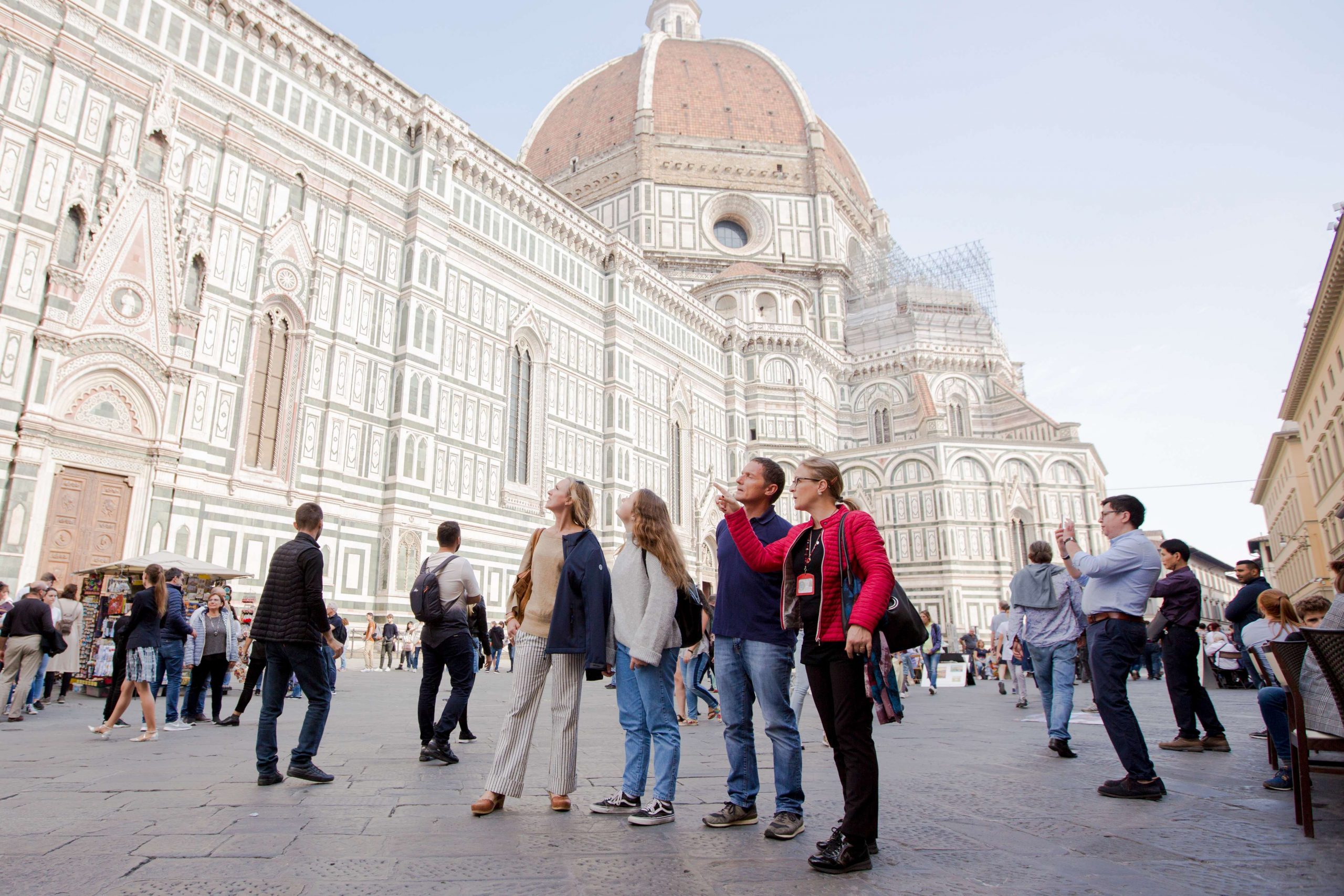Walking tours Europe seniors offer a unique blend of physical activity, cultural immersion, and leisurely exploration, perfectly suited for active retirees seeking enriching travel experiences. These tours cater specifically to the needs and preferences of older adults, prioritizing comfortable paces, manageable distances, and accessible routes across Europe’s diverse landscapes. From the charming cobblestone streets of Prague to the sun-drenched vineyards of Tuscany, senior-focused walking tours unlock the continent’s historical and cultural richness at a pace that respects individual capabilities and ensures a memorable journey.
This guide delves into the various aspects of planning and enjoying walking tours in Europe as a senior traveler. We will explore different tour styles, essential health and safety considerations, logistical planning, cultural insights, and visual highlights of potential destinations. Whether you are a seasoned traveler or embarking on your first European adventure, this resource provides the information you need to plan a safe, enriching, and unforgettable experience.
Health and Safety Considerations
Embarking on a walking tour in Europe offers a fantastic opportunity to explore vibrant cities and charming towns. However, senior travelers need to prioritize their health and safety to ensure a comfortable and enjoyable experience. Careful planning and preparation can significantly mitigate potential risks and contribute to a memorable trip.
This section outlines essential health and safety tips, potential risks, and preventative measures specifically tailored for senior participants in walking tours.
Essential Health and Safety Checklist for Seniors
Before, during, and after your walking tour, consider the following points to ensure a safe and healthy journey.
- Consult your physician before traveling, especially if you have pre-existing health conditions. Discuss any necessary medications, vaccinations, and potential health concerns related to walking tours.
- Pack a well-stocked first-aid kit including any personal medications, bandages, antiseptic wipes, pain relievers, and motion sickness remedies.
- Wear comfortable, supportive walking shoes that have been broken in to prevent blisters and foot pain. Consider orthotic inserts if needed.
- Carry a water bottle and stay hydrated throughout the day, especially during warmer months. Dehydration can exacerbate existing health conditions and lead to heat exhaustion.
- Use sunscreen with a high SPF and wear a hat to protect yourself from the sun. Sunburn can be particularly problematic for seniors with sensitive skin.
- Be aware of your surroundings and avoid walking alone in poorly lit or isolated areas, especially at night. Stick to well-lit and populated streets.
- Inform someone of your itinerary and check-in regularly. Share your daily plans with a family member or friend back home.
- Familiarize yourself with emergency contact numbers for local authorities, medical services, and your tour operator.
- Learn a few basic phrases in the local language related to asking for help or directions.
- Carry a copy of your passport, travel insurance information, and emergency contact details separately from your originals.
Potential Health Risks and Preventative Measures
Walking tours, while enjoyable, present certain health risks for seniors. Understanding these risks and taking preventative steps is crucial for a safe trip.
- Heatstroke: Prolonged exposure to heat and sun can lead to heatstroke, particularly for seniors. Preventative measures include staying hydrated, wearing light-colored clothing, seeking shade during the hottest parts of the day, and avoiding strenuous activity during peak heat. Recognizing the symptoms of heatstroke (high body temperature, confusion, dizziness) is vital; seek immediate medical attention if they occur.
- Falls: Uneven pavements, cobblestone streets, and crowded areas increase the risk of falls. Wearing appropriate footwear, using walking sticks or canes if necessary, and maintaining awareness of your surroundings can help prevent falls. Consider purchasing travel insurance that covers medical expenses related to falls.
- Exacerbation of Pre-existing Conditions: Walking tours can strain existing health conditions like heart disease, arthritis, or respiratory problems. Consult your doctor before traveling, and pace yourself accordingly. Listen to your body and take breaks when needed. Consider bringing any necessary medications and devices, such as inhalers or mobility aids.
Importance of Travel Insurance and Emergency Contact Information
Comprehensive travel insurance is essential for senior travelers embarking on walking tours. It provides financial protection in case of medical emergencies, trip cancellations, lost luggage, and other unforeseen circumstances. Ensure your policy covers medical evacuation, hospitalization, and repatriation.
Maintaining readily accessible emergency contact information is equally important. Share your itinerary with a family member or friend back home, and provide them with contact details for your tour operator, local emergency services, and your accommodation. Carry a list of these contacts with you at all times, preferably in a separate, easily accessible location from your passport and other important documents.
Logistics and Planning
Careful planning is crucial for a successful and enjoyable walking tour of Europe, especially for seniors. This section details itinerary considerations, booking options, and essential packing lists to ensure a smooth and comfortable trip. We’ll explore practical aspects to help you create a memorable experience.
Sample 5-Day Walking Tour Itinerary: Rome, Italy
This itinerary focuses on manageable walking distances and incorporates ample rest periods, suitable for seniors. Rome offers a rich blend of history and culture, easily accessible at a relaxed pace.
Day 1: Colosseum & Roman Forum (approx. 2 miles, 4 hours walking, including breaks). Begin at the Colosseum, exploring its grandeur. Allow time for photos and a leisurely stroll through the Roman Forum, pausing frequently to absorb the history. Afternoon: Rest and relax at a charming café near the Forum. Evening: Enjoy a traditional Roman dinner.
Day 2: Pantheon & Piazza Navona (approx. 1.5 miles, 3 hours walking, including breaks). Morning: Visit the Pantheon, marveling at its architectural brilliance. Afterwards, wander through Piazza Navona, admiring its fountains and street artists. Afternoon: Relax by the Trevi Fountain, tossing a coin for good luck. Evening: Enjoy gelato and a leisurely evening stroll.
Day 3: Vatican City (approx. 2 miles, 4 hours walking, including breaks). Morning: Explore St. Peter’s Basilica and the Vatican Museums (consider pre-booking tickets to avoid long queues). Afternoon: Relax in the Vatican Gardens (optional, requires separate booking). Evening: Enjoy a pizza dinner near the Vatican.
Day 4: Borghese Gallery & Gardens (approx. 1 mile, 2.5 hours walking, including breaks). Morning: Visit the Borghese Gallery and Museum (pre-booking essential). Afternoon: Stroll through the beautiful Borghese Gardens, enjoying the peaceful atmosphere. Evening: Enjoy a traditional pasta dinner.
Day 5: Spanish Steps & Shopping (approx. 1 mile, 2 hours walking, including breaks). Morning: Visit the Spanish Steps and enjoy the views. Afternoon: Explore the surrounding shopping streets at a leisurely pace. Evening: Enjoy a final Roman dinner before departure.
Tour Operators vs. Independent Planning
Booking through tour operators offers convenience and pre-arranged itineraries, often including transportation and guided tours. However, it can be more expensive and less flexible. Independent planning provides greater control over the itinerary and budget but requires more research and organization. The best option depends on individual preferences and travel style.
Essential Packing List for Seniors
A well-organized packing list ensures a stress-free trip. This table categorizes essential items for seniors embarking on a European walking tour.
| Category | Item | Quantity | Notes |
|---|---|---|---|
| Clothing | Comfortable walking shoes | 2 pairs | Essential for all-day walking |
| Clothing | Comfortable socks | Multiple pairs | Avoid cotton; opt for moisture-wicking materials |
| Clothing | Lightweight, breathable clothing | Several sets | Layer clothing for varying temperatures |
| Clothing | Rain jacket | 1 | Essential for unpredictable weather |
| Medications | Prescription medications | Sufficient supply | Carry a copy of your prescription |
| Medications | Over-the-counter pain relievers | Sufficient supply | For minor aches and pains |
| Medications | Motion sickness medication (if needed) | Sufficient supply | Especially important for bus or train travel |
| Documents | Passport & visa (if required) | 1 | Keep a photocopy separate from the original |
| Documents | Travel insurance information | 1 | Keep a digital copy as well |
| Documents | Flight/train tickets | 1 | Keep a digital copy as well |
| Other | Walking stick or cane (if needed) | 1 | Provides stability and support |
| Other | Small backpack | 1 | For carrying essentials during the day |
| Other | Reusable water bottle | 1 | Stay hydrated throughout the day |
Cultural and Historical Aspects
Exploring Europe’s rich tapestry of history and culture is a key element of any successful senior walking tour. Understanding the historical context of the locations visited significantly enhances the overall experience, transforming a simple stroll into a journey through time. By weaving in cultural insights and interactive elements, we can create engaging and memorable tours tailored to the interests and capabilities of our senior travelers.
Historical Significance of Three European Cities
Rome, Paris, and Prague offer distinct historical narratives that resonate deeply with visitors. Rome, the “Eternal City,” boasts millennia of history, visible in its ancient ruins like the Colosseum and Roman Forum, remnants of a powerful empire that shaped Western civilization. These sites provide tangible connections to the past, allowing seniors to visualize the grandeur of the Roman Empire and its lasting influence. Paris, the “City of Lights,” is steeped in history from its medieval origins to its role as a center of Enlightenment thought and artistic innovation. Walking tours can highlight iconic landmarks like Notre Dame Cathedral and the Louvre Museum, illustrating the evolution of Parisian architecture and its contribution to global art and culture. Prague, a city with a captivating blend of architectural styles, reflects its complex history under various empires, including the Holy Roman Empire and Austro-Hungarian Empire. Its well-preserved medieval Old Town Square and Charles Bridge offer a captivating glimpse into centuries past, revealing the city’s resilience and cultural richness.
Cultural Experiences for Senior Travelers
Integrating cultural experiences into walking tours caters to the diverse interests of senior travelers. This might involve visits to local markets, where the vibrant atmosphere and interaction with vendors create an immersive experience. Tasting local delicacies and learning about regional culinary traditions adds another dimension to the tour, stimulating the senses and fostering a deeper appreciation of the local culture. Attending a classical music concert in a historic venue or visiting a local artisan workshop can provide enriching cultural encounters, catering to diverse interests and preferences. Furthermore, incorporating visits to museums with carefully curated routes that minimize walking distances and maximize accessibility ensures that all participants can comfortably enjoy the experience.
Interactive Elements for Engaging Senior Travelers
Interactive elements are crucial for keeping senior travelers engaged and preventing cognitive overload. Storytelling, incorporating local legends and historical anecdotes, can bring the past to life, making the tour more memorable and emotionally resonant. This can involve sharing captivating narratives about specific landmarks or historical figures, transforming static sites into dynamic scenes from the past. Local interactions, such as conversations with residents or artisans, add a personal touch, allowing seniors to connect with the community and gain firsthand insights into local life. For example, a brief conversation with a local baker explaining the process of making traditional bread can be far more engaging than simply observing the bakery from the outside. Guided discussions at key points along the route, prompting reflection and encouraging sharing of personal experiences related to the historical context, can foster a sense of community among the group and enhance overall enjoyment.
Concluding Remarks
Embarking on a walking tour of Europe as a senior offers an unparalleled opportunity to explore captivating cities and breathtaking landscapes at a comfortable pace. By carefully considering the factors outlined in this guide – from choosing the right tour style and prioritizing safety to planning logistics and embracing the cultural richness of your destination – you can create a truly memorable and enriching travel experience. Remember that careful planning and preparation are key to ensuring a safe and enjoyable journey, allowing you to fully appreciate the beauty and history Europe has to offer.




